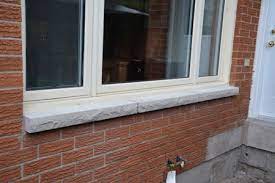Windows are essential elements of any structure, providing natural light, ventilation, and a connection to the outside world. Amid the various components that make up a window, the outer window sill stands out as a vital feature with both functional and aesthetic significance. In this article, we delve into the importance of outer window sills, their various materials, and maintenance practices to ensure their longevity.
Structural Significance:
The outer window sill, also known as a windowsill or window ledge, serves as the horizontal base or ledge at the bottom of a window opening. It plays a crucial role in supporting the window frame and pane while preventing water infiltration into the interior of the building. Properly designed outer window sills effectively channel rainwater away from the window, protecting the structure from potential water damage.
Aesthetic Appeal:
Beyond its structural role, the outer window sill contributes to the overall aesthetic appeal of a building. The design and material of the window sill can enhance the architectural style, providing a finishing touch that complements the exterior. Whether sleek and modern or ornate and traditional, the outer window sill contributes to the visual harmony of the structure.
Materials Used in Outer Window Sills:
Outer window sills come in various materials, each offering distinct advantages and considerations. Common materials include:
- Stone: Natural stones such as granite, marble, or limestone are durable and lend a timeless elegance to the exterior. They are resistant to weathering and can withstand exposure to the elements.
- Wood: Wooden window sills are popular for their warmth and versatility. However, they require regular maintenance to protect against moisture, pests, and decay. Proper sealing and periodic painting or staining are essential.
- Metal: Aluminum or steel window sills are valued for their strength and resistance to corrosion. They are often chosen for contemporary designs and can be powder-coated for additional protection.
- Concrete: Concrete window sills are durable and can be molded into various shapes and sizes. They are often chosen for their affordability and resistance to weathering.
Maintenance Practices:
To ensure the longevity and functionality of outer window sills, regular maintenance is essential:
- Cleaning: Periodically clean the window sill from debris, dirt, and leaves. Accumulated dirt can lead to water pooling and potential damage.
- Sealing: For wooden window sills, sealing is crucial to protect against moisture. Apply a quality sealant or paint to prevent water absorption and decay.
- Inspecting for Damage: Regularly inspect the window sill for signs of damage, such as cracks, rot, or pest infestations. Prompt repairs can prevent further deterioration.
- Gutter Maintenance: Ensure that gutters and downspouts are clear of debris to prevent water from overflowing onto the window sill.
Replacement Considerations:
If an outer window sill is significantly damaged or deteriorated, replacement may be necessary. When considering replacement, it’s important to choose materials that align with the architectural style of the building and to hire a professional for proper installation.
Energy Efficiency:
Well-maintained outer window sills contribute to the overall energy efficiency of a building. Properly sealed windows and sills prevent drafts, reducing the need for excessive heating or cooling and promoting a more sustainable living environment.
Conclusion:
The outer window sill, often overlooked, is a critical component of a building’s structure and aesthetics. Whether made of stone, wood, metal, or concrete, the choice of material and regular maintenance practices can significantly impact the window sill’s longevity and performance. By recognizing the importance of outer window sills and implementing proper care, homeowners can enhance the beauty and structural integrity of their homes for years to come.

